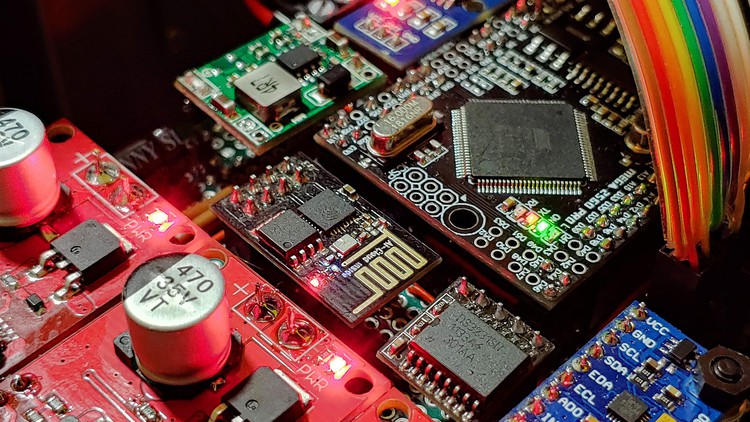
Learn how to program 8051 Microcontroller using Assembly Language Constructs!
What you will learn
Assembly Language Programming
Architecture of 8051 Microcontroller
Microprocessor vs Microcontroller
Keil IDE
Description
In this course, we’ll be studying about the assembly language programming instructions to program the 8051 Family Microcontrollers.
Note: No Hardware Required! Everything is done in a simulation software
In this course, we will
1. Learn the differences between a Microprocessor and a Microcontroller
2. Variants of a Microcontroller
3. Criteria in choosing a Microcontroller
4. Internal Architecture of 8051
5. Work with Hexadecimal numbers.
6. Understand the Program Memory and the Data Memory.
7. Understand the Bit Addressability of Registers.
8. Differences between a Program Counter and a Stack Pointer.
9. Work with Keil IDE
10. Perform Single Byte Addition
11. Perform Double Byte Addition
12. Understand the usage of PSW Flags
13. Overflow in addition
14. Importance of stack
15. Learn some examples of assembly language programs
Program 1 – Sum of first five natural numbers
Program 2 – Multiplication through repeated addition
16. Program the I/O Ports.
17. Implement the Logical instructions
18. Understand the Single Bit Instructions
This course is strictly intended for beginners who have started to learn about embedded systems and want to dig deep into it. The content discussed here is promised to give you a good understanding of various features of 8051 Microcontroller family and why do they exist?
Everything is discussed from the scratch. So, there is no need to worry if you’re a complete beginner. The instruction set is also uploaded for your reference.
Content